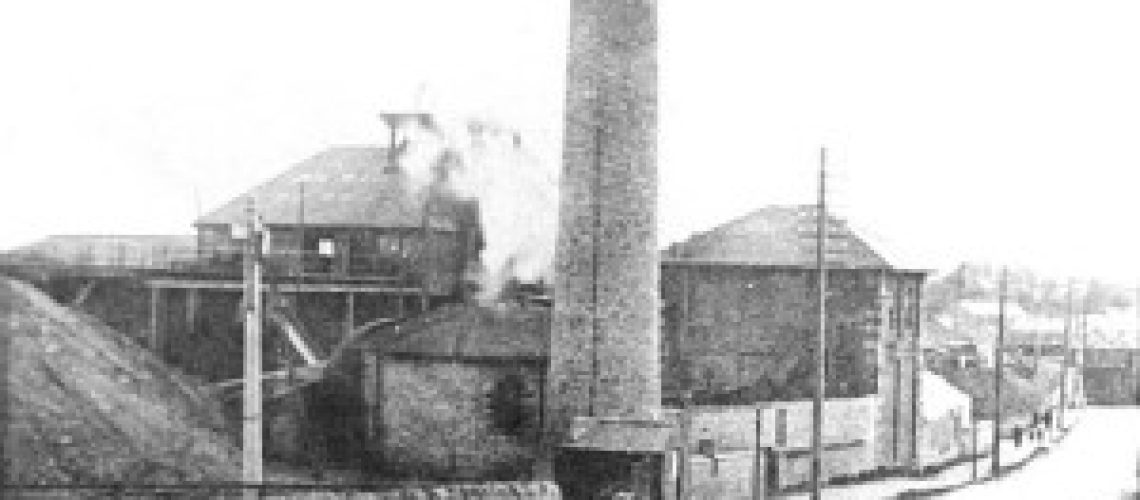LEADGATE PARISH
Leadgate Parish was formed in 1863 from the parishes of Lanchester and Medomsley and comprised the township of Iveston with the hamlet of Crook Hall and village of Leadgate. The area was 4,000 acres, and the total population of the parish was estimated at 4,900.
Iveston Township
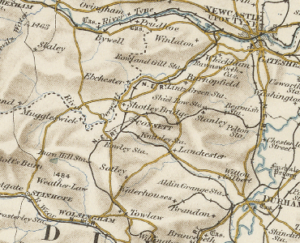
Iveston Township, which comprised the greater portion of Leadgate Village and the hamlet of Crook Hall, had an area of 1,925 acres, valued in the county rate at £9,552. The land belonged principally to the Hon. Rev. Warren Napier-Clavering, who held the manorial rights, George Nicholson, Esq., E. W. E. Balleny, Esq., J.P., John Thompson, John Moore (Executors of), and the Consett Iron Company.
Iveston had a population in 1801 of 251; in 1811, 214; in 1821, 238; in 1831, 212; in 1841, 448; in 1851, in consequence of the opening of new collieries and ironstone works, it had increased to 2,500; in 1861 which we could say was the birth of our Leadgate Parish. The population was 3,327; in 1871, 3,495, in 1881, 4,035; and in 1891, 4,188 souls.
From the Boldon Book, we learn that Iveston paid two marks, provided a milch cow, ploughed one acre and a half of the lord’s land at Lanchester, attended the great chase with two greyhounds, and undertook the carriage of wine with a wain of eight oxen.
Soon after, the old records, relating to this place, mention a family of the local name; and previous to Hatfield’s Survey, Iveston became the property of Kepier Hospital.
After the suppression of the monastic establishments, John Cockburn sold the manor of Iveston to John Heath. The heir to this family married into the Tempests, with whose descendants, the Londonderry’s, the estate remained. The manor court was still held, and the land being held by copy of court rule.
From an early date, Iveston had been intimately interested in the coal industry. The colliery here was mentioned in the court rolls as far back as 1611 when a project was formed for sinking a “cole pitt” to which all the villagers were expected to contribute. There were, however, one or two who objected, whereupon the jurors agreed that “whosoever refuseth to contribute to the sinking of ye pitt, shall have no part in ye coles gotten there”. For this leave of working the coal a yearly rent of 6s. 8d. was paid to the lord of the manor.
The Eden Colliery In Leadgate Parish
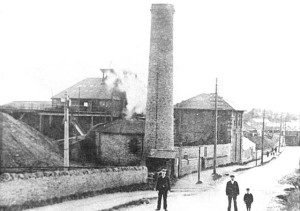
The Eden Colliery in Leadgate Parish was owned by the Consett Iron Company, was now working the Hutton and the Main coal seams. This pit had been working for about fifty years. The first-named seam was met at a depth of 30 feet, and had an average thickness of seven feet six inches of workable coal, and contained a band of from seven to nine inches wide, and about one foot of bad coal at the foot of the lower section. Six feet below the bad coal was the Low Hutton seam, which had not yet been worked. The Main coal was 30 feet below the Hutton and averages four feet of clean coal. Besides the above seams, there existed the Towneley, Hodge, Hand and the Tilly, all more or less thin. The Busty, which had not yet been opened out, lies at a depth of 210 feet below the Main coal and gives a thickness of five feet. The output, which amounted to 5,500 tons per fortnight, was almost entirely used for making gas for the steel furnaces, the remainder, about one-ninth, being disposed of by land sale. The number of men and boys employed was 261. The Iveston Colliery was not at present being worked, though there was a small land-sale worked near the village, the coal royalty having been left by one of the Claverings for the people of Iveston manor, who were only required to pay the cost of leading and getting of the coal.
A powerful duplex pumping engine had been placed at the pumping shaft, situated to the east of Iveston, which raised the water from the Royalty, below water level, to the Consett Iron Works.
Iveston Village, in early documents termed Iseton and Itheston, was undoubtedly an ancient place. It occupied an exposed and elevated situation, three miles north-west from Lanchester, and one mile south-east from Leadgate Parish.
Leadgate Parish

Leadgate Parish was a large and populous village, stretched along the turnpike road between Consett and Dipton, thirteen miles west by south of Newcastle, and one and a half east of Consett. Leadgate is said to have got its name from the old custom of carrying lead by pack ponies and donkeys from the west as far as Ledyiate near the east end of what was now known as Leadgate. At this gate which was a toll gate, the burdens were exchanged for a load of coal. The inhabitants were entirely of the mining class, and chiefly in the employ of the Consett Iron Company. It was part of the Leadgate Parish Local Board district, which was formed in 1866, embracing nearly the whole of Iveston township, and a portion of Medomsley township in Leadgate Parish. An excellent supply of water was provided by the Consett Water Company, and the principal thoroughfares were lighted with gas.
Crookhall and Estate
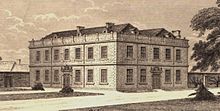
Crookhall and Estate. The Hall was a large rectangular mansion of stone and formerly stood within spacious grounds. It was now, however, unoccupied and neglected, and was fast falling into ruins. For many years it was the seat and property of the Bakers, after which it stood empty for a considerable time.
From 1794 to 1808 it was the abode of a small community of English Catholic students, who fled from Douay owing to the excesses of the French Revolutionists, and here they remained till the present Ushaw College was founded.
This estate was entered in the Boldon Book as freehold, at which time it was held by the De-la-Leys, lords of Witton, who soon after the date of the first record, made it over to the church of Durham. When Bishop Hatfield occupied the estate it was in the possession of the Kirkleys, from whom the Thorntons received it, and through the last-named, it came to the Lumleys. In 1588 it was acquired by the Shaftoes, and fifty years later George Baker, Esq., bought it. It then belonged to the Consett Iron Company.
Leadgate Parish Schools
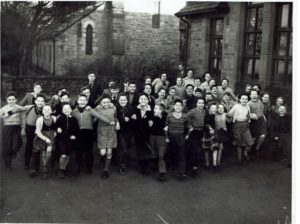
The National School
Leadgate Parish National School adjoined the church on the west and was a mixed school, comprising two large rooms with one classroom. It was erected originally as a Catholic school and was enlarged in 1891 for £900, the accommodation is for 291. It was attended by an average of 214. The infant school is situated at the west end of the village, in a building which served as a chapel of ease before the formation of the parish and building of the present church. Here provision was made for 250 children, there was an average attendance of 156.
Catholic Schools adjoined the church and were good stone buildings, erected about 1863. They were for mixed and infants, and provided for 400 children, and were under the control of the Sisters of St. Paul.
The British School, Iveston, was off very old foundation and was supported by the voluntary efforts of the people. It was then held in a good stone building, which would accommodate about 150 children.
The Wesleyan School was held in a good stone building, originally erected by the Consett Iron Company, but turned over to this body about 1870.
During its first ten years, it had been considerably enlarged. It was a mixed school, having accommodation for 260, and being attended by an average of 230.
Leadgate Parish Co-operative Hall
The Co-operative Hall was a fine large room, well fitted, and lighted by electricity. It ran the length of the Co-operative business premises, and would seat 600 people, being well adapted for entertainments, and was the largest hall in the village.
Leadgate Parish Miners Hall
Miners’ Hall. This was first built as a Methodist Free Church in 1875, from which body it was purchased by the miners.
